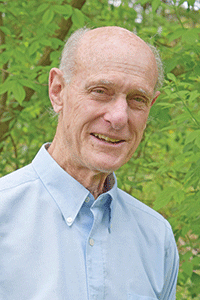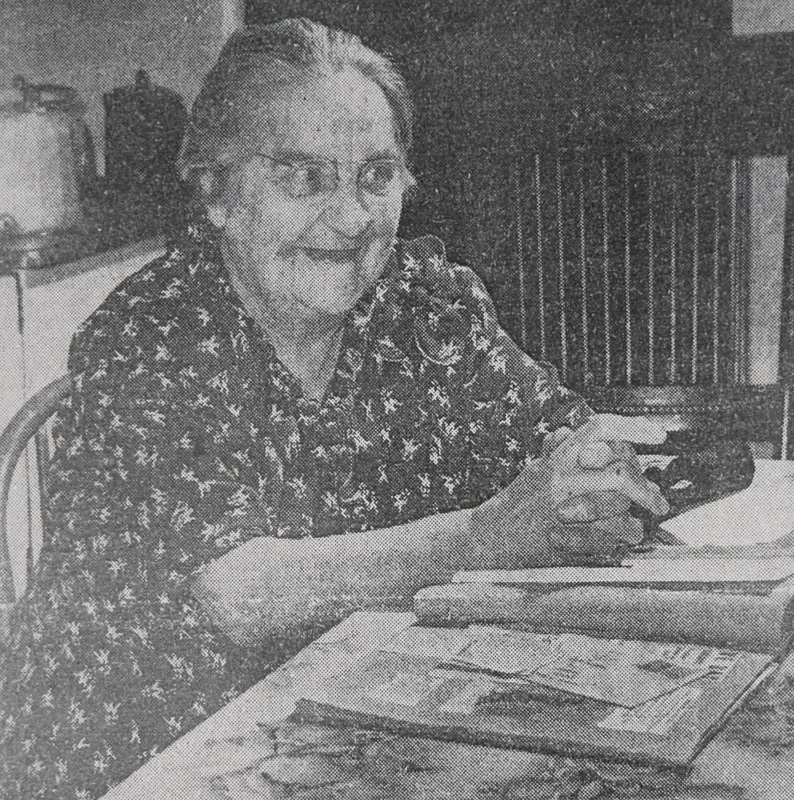When she stopped at the homes of friends and found no one home, she would spontaneously pen a short poem and leave it at the door so they would know that Edith Thompson had stopped to call. Far beyond her friends’ doors, the Houston County native influenced countless lives, coast to coast, directly as a teacher and social worker. Indirectly, even more knew her as a soil conservationist, book reviewer and lover of nature – through her writing.
Edith Isabelle Thompson (1873-1950) was most widely known for her poetry about rural life and nature. The La Crosse Tribune once called her “the Coulee Region’s poet laureate.” She believed there was no place more beautiful than the upper Mississippi River area and Houston County.
Her volume of poetry, Romany Riddles, published in 1929, was based on her pleasant experiences with gypsies during her youth. She befriended these intriguing folks who encamped near the family farm in Looney Valley, Houston Township. Edith compiled a gypsy dictionary and purchased all the gypsy books she could find.
Another volume, Lines from a Quarter Section was published posthumously in 1962 by the Houston County Historical Society.
In 1937, one of her poems, “Winter Meadows,” was published in a volume entitled, Christmas Lyrics of 1937. Seven decades later, in 2007, three of her poems were included in To Sing Along the Way, Minnesota Women Poets from Pre-Territorial Days to the Present.
Thompson contributed to various magazines and newspapers, including The Country Gentleman, The Land (publication devoted to soil conservation), Minneapolis Journal, Boston Transcript (in a book review), Kansas City Star, Prison Mirror (Stillwater), La Crosse Tribune, The Forum and local Houston area publications.
Her poet hero was her English contemporary William Wordsworth, whom she opined “wrote some of the best and some of the worst poetry in the English language. Ironically, The Land, published het book review of the biography of Wordsworth by Mark Van Doren.
In 1917 after her parents had both died, Edith left for Chicago and then later, New York where she volunteered as a social worker. Around 1920, she returned to Houston to teach English and write about the history of Looney Valley (later lost in a fire). She joined the Civic League and other local organizations. Thompson was elected Justice of the Peace for the village of Houston, which entailed getting the village drunkard out of trouble, settling disputes between neighbors and performing marriages.
She always called on a local pastor when a couple came in to be married. Edith believed a young couple should confer with a pastor before their nuptials. The pastor would offer a prayer and perform part of the ceremony. One couple was aware of her fascination with gypsy life. Following their official marriage ceremony, they reassembled on the lawn at Edith’s home for a gypsy wedding ceremony.
A.J. Russell, a Twin Cities writer, who published her first book of poetry (Romany Riddles), brought back from England a door knocker from the home village of famous Victorian-era writer Thomas Carlyle. The knocker was a gift for the door of a log cabin being leisurely built for Edith by Ole Hoganson. Construction on the family farmstead, six miles from Houston, began in 1923 and finally finished in 1927 with a large living room. Stones for the fireplace came from the creek where Edith had waded during her childhood. The logs came from the trees among which she had once played.
Edith, a good singer during her youth, later lost her voice quality with TB of the throat. Despite also suffering from deafness during later life, she volunteered to read to the blind. As an ardent lover of books, she asked friends for names of persons to whom she might read. She spent part of each week reading to two blind citizens. After their deaths, Edith again asked for names of shut-ins. However, her own death prevented others from benefiting from her love of books.
Edith was born October 29, 1873, (three years after Wordsworth) on the family farm to parents Isaac and Mary Darling Thompson, pioneer settlers and farmers in Lower Looney Valley, Houston Township. Her father was a native of Vermont, who while surveying in Wisconsin, visited the Root River Valley and identified a place where he wanted to settle. In 1852, he homesteaded on government land below a bluff, where on the highest point was a Native American grave, marked by rocks and forever facing west.
Isaac married a pioneer girl who had come west from New York State. Edith described her mother in poetry:
My mother’s laughter was
a silken flag
Rippling above some rampart
of her soul;
Drawing us over rocky steeps up to her knoll
Where breezy sunlight danced –
Laughter unfaltering
and unafraid –
We followed where its teasing brightness played,
Making of duty just
an escapade.
Edith began rhyming while attending the red brick schoolhouse in the valley. She continued her education while living with an aunt and uncle, later graduating from Mankato Normal School and the University of Minnesota while contributing to college literary publications. Edith taught English and Latin in high schools at Los Angeles, the Twin Cities, Red Wing, Lanesboro, and Larimore, N.Dak., always returning to the family farm during summers.
Edith. at age 77, died on a Saturday afternoon in December 1950 (ironically, the same year as the death of Wordsworth). She was stricken with a heart attack while standing on the corner of West Fifth and High Streets in Winona while waiting for a bus after visiting a public library.
She was dead before the ambulance arrived at the hospital. For the past few years, Edith had resided in Winona during the winter and on her farm near Houston during the summer. One obituary mentioned burial in the Looney Valley Cemetery; another said the Money Creek Cemetery.
Edith never married but beginning in 1923 (about age 50), she raised two teenaged nieces, whose mother had died and their father had remarried. She was survived by four nieces.
Sources: Numerous clippings on file at the Houston County Historical Society.




Leave a Reply